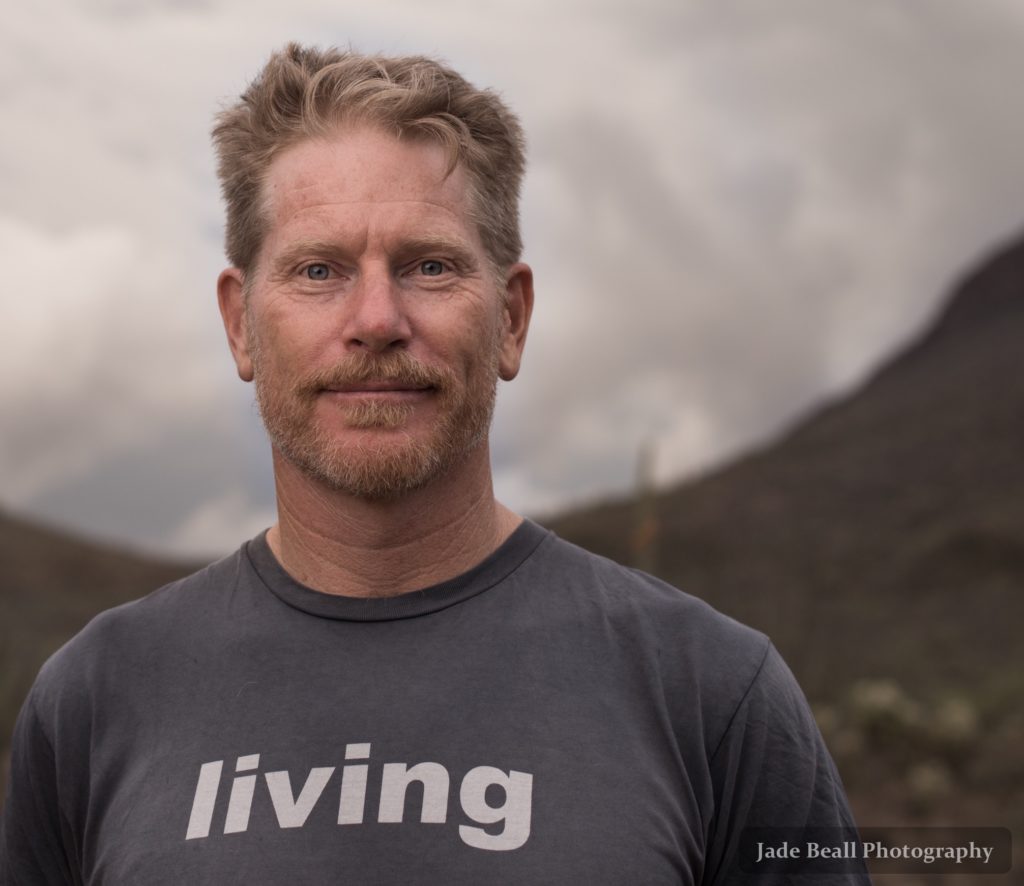Biography

Since 1993 I’ve run a successful permaculture & regenerative design, consulting, and education business focused on integrated and sustainable approaches to landscape design, planning, and living. And as I live in a dryland environment, water harvesting has long been one of my specialties and passions. Through my business I’ve been able to share this passion and many of the fun innovations and daily adventures that come about from striving to live more collaboratively with, and comfortably in, the Sonoran Desert. At home my brother, his family, and I harvest about 100,000 gallons (378,000 liters) of rainwater a year on a 1/8-acre (0.05 ha) urban lot and adjoining public right-of-way. This harvested water is then turned into living air conditioners of food-bearing shade trees, abundant gardens, and a thriving landscape incorporating wildlife habitat, beauty, edible and medicinal plants, and more. The sheltering landscapes can cool buildings by up to 20° F (11° C), reduce water and energy bills, and require little more than rainwater to thrive. Outside the home, I have helped others do the same, enabling clients to create ephemeral springs, raise the level of water in their wells, and shade and beautify neighborhood streets by harvesting their street runoff in adjacent native tree wells.
We emphasize planting native food forests because the native plants are unique to, and the best adapted to, our local soils, climate, and wildlife; while being rooted in the ethnobotanical history of all the peoples of this place (or whatever place you find yourself in). It brings more of the natural world into our built environment. And we work with, and support, the larger community and watershed by training citizen foresters to plant and tend the rain, and then the food forests where they live, work, and play with our NeighborhoodForesters.org efforts. In our neighborhood alone we’ve worked with neighbors to plant well over a million gallons of stormwater per year, which then freely waters the thousands of trees and understory plants we’ve planted with that rain. The rain-fed neighborhood forests then invite us to engage with them and each other more, because you love being with this nurturing life as you walk, bike, converse, plant, prune, harvest, and play.
But this is just the beginning. Water is the bait to entice you to see, connect, learn from, and collaborate with the natural systems that sustain us in order to enhance a livelier greater whole. In this spirit, we also passively and actively harvest the sun for free and clean heat, light, and power. We design and grow shade in sync with the sun’s seasonally changing path across the sky, so that shade cools us in summer, but not in winter. Passive ventilation and wind harvesting boosts this free summer cooling. Fun, easy, dynamic stuff that generates more vibrant life—our true community health and wealth.
I started writing the Rainwater Harvesting for Drylands and Beyond series with the goal of empowering my clients and my community to make positive change in their own lives, yards, and neighborhoods by harvesting and enhancing free on-site resources such as water, sun, wind, shade, food forests, and more. I wanted to provide accessible books that explain what water harvesting is, how to do it appropriately, and how to tailor water-harvesting strategies to the unique conditions of different sites and integrate it with the harvest and regeneration of other resources. I believe we all can become more conscious beneficial stewards of the land, and partners in the ecosystem in which we live, and I believe that by harvesting water—and more—we can all begin to transform our households and neighborhoods from being consumers of resources to generators—and even regenerators—of resources. The aim is to give back more than we take. Drawing on my years of teaching, consulting, designing, on-the-ground implementation, and learning from others, I offer readers my clear and simple process to assess and design their own harvesting systems at home and throughout their community.
